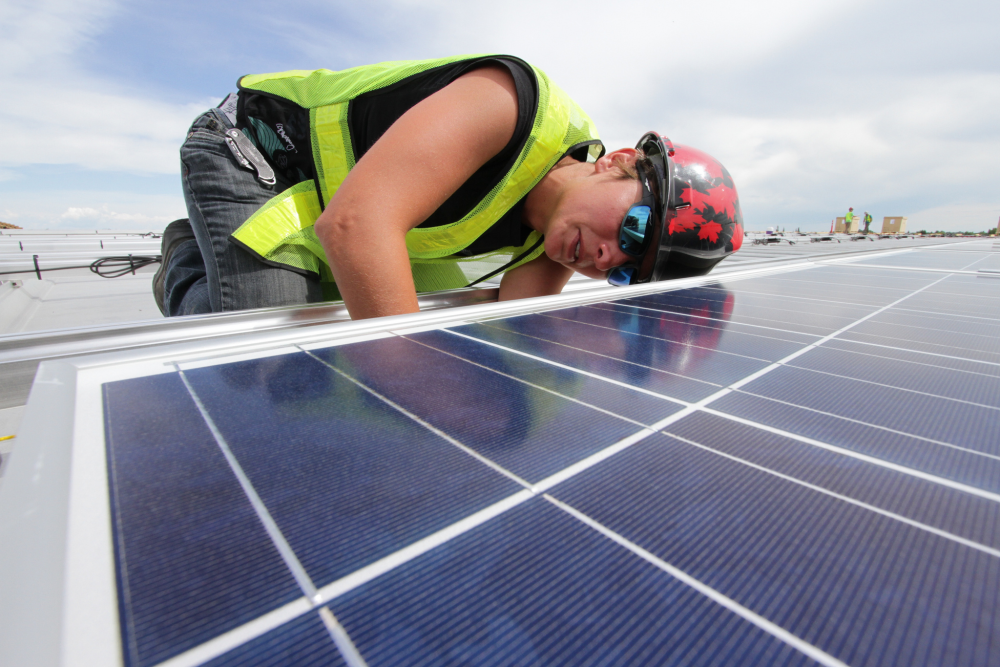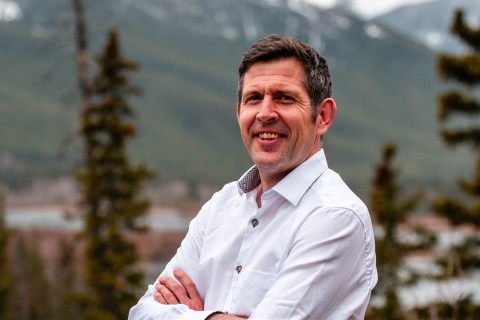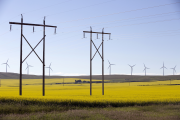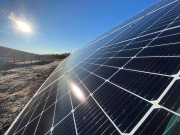Another year has flown by, and there’s no better time to take a moment and reflect. In many ways, it’s been a tough year for climate action. For one thing, political backsliding in some of Canada’s provinces has hindered progress. Notably, autumn saw the Intergovernmental Panel on Climate Change sounding the alarm with a special report spotlighting the urgent need for swifter and stronger action to rein in carbon pollution.
Nevertheless, it’s worth recalling that 2018 has delivered its own share of bright spots. We at the Pembina Institute are proud of the energy policy gains achieved across the country, and look forward to building on them in 2019.
Here are 10 climate and energy wins worth celebrating as the year comes to a close.
1. Canada moves forward with a national price on pollution
After years of national debate, and great example setting from leading provinces — including Alberta and British Columbia, both of which introduced a carbon price in 2008, with B.C. committing to resuming strengthening it this year — Canada has a national price on pollution. This is a proven, cost-effective way to reduce emissions by driving behaviour change, and something the Pembina Institute has advocated for years. The federal backstop goes into place in January 2019, and we can’t think of a better way to ring in the new year.
2. B.C. leads the way, once again
Earlier this month, British Columbia released a clean growth plan that gets the province back on track to meeting its targets for reducing carbon pollution, sets forth a vision for moving away from fossil fuels and towards clean energy, contains some of the boldest climate policies in Canada and North America, and encourages clean innovation and jobs. The CleanBC plan sets a course for all new homes and buildings to be low carbon in 10 years, and for all new cars sold to be zero emissions in 20 years. It also outlines an accountability mechanism to track progress and course correct as needed. The Pembina Institute’s B.C. director was proud to speak at the announcement and to sit on the province’s Climate Solutions and Clean Growth Advisory Council. It brings us great hope to see B.C. step up again as a climate leader.
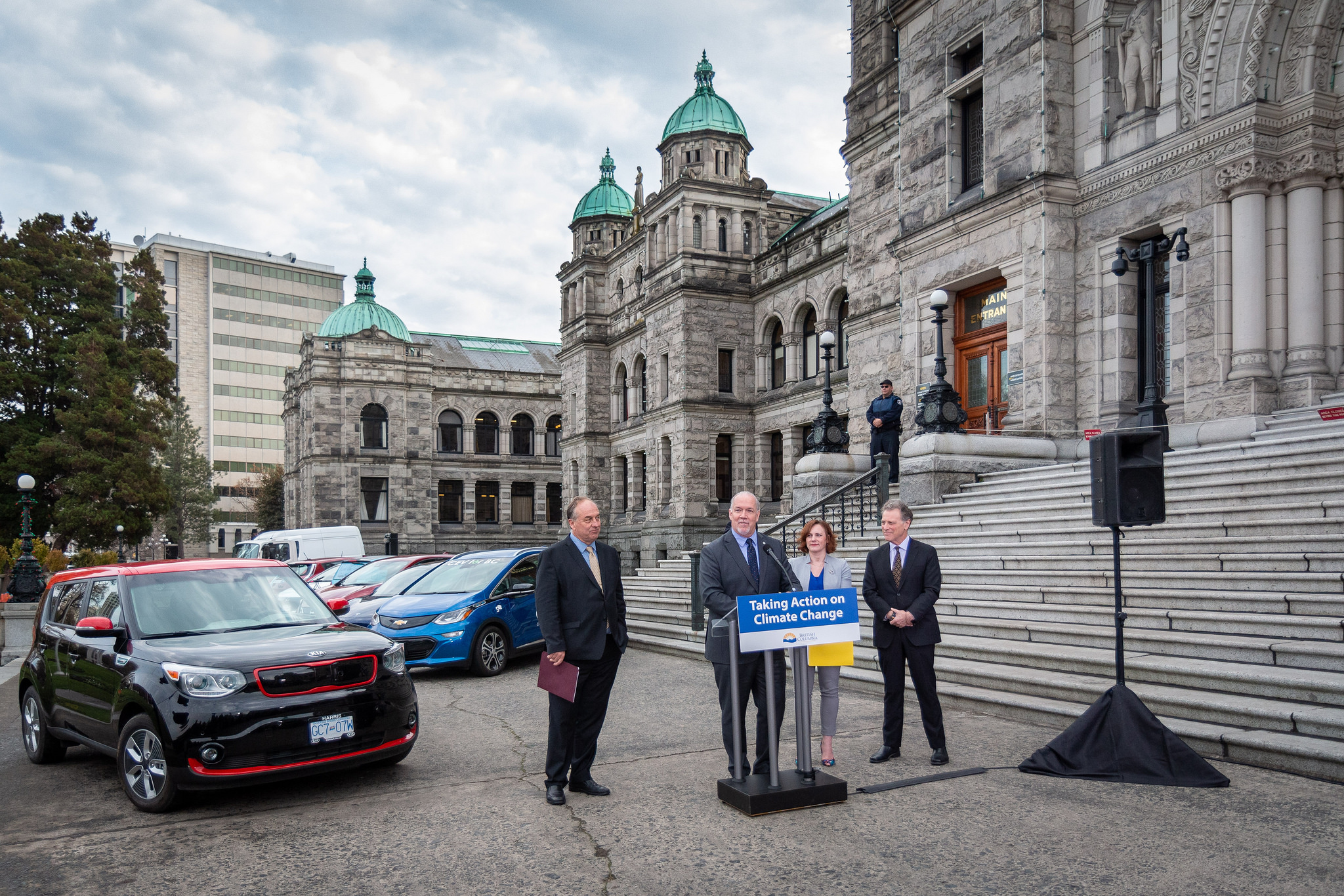
3. Alberta leads the country in conservation action
In May, the Government of Alberta legislated the protection of 1.3 million hectares of land in northern Alberta adjacent to the oilsands and in doing so created of the world’s largest boreal forest protected area complex. Late this year, the Government of Alberta also announced proposals to protect the Bighorn and the Ronald Lake area and is consulting now on legislating these sites. You can complete the surveys to show your support here and here.
Protecting landscapes from industrial activity supports responsible energy development in adjacent areas, and is a win-win-win for climate, responsible oilsands development and traditional and recreational users. This progress would not have happened without the leadership of First Nations like Tallcree and Mikisew Cree, and energy companies Syncrude, Cenovus, Imperial Oil and Teck Resources. Taken together, this has been the biggest year for conservation in Alberta in over 80 years.
4. Cities and companies are thinking outside the box on congestion
Transportation is one of the biggest nuts to crack when it comes to climate action. Every day, everyone makes decisions on how to get to work, home, hockey practice, or a doctor’s appointment, and — increasingly with the growth of online shopping — how goods will be delivered to their home. At the Pembina Institute, we’re working on policies and solutions that enable cleaner choices for the movement of people and goods — through more transit options, upholding emissions standards, introducing a clean fuel standard, less polluting truck fleets, etc. We’re seeing more and more solutions as a result of thinking outside the box, including moving more goods by bicycle and implementing microhubs in dense city centres (check us out on CBC’s The National discussing the idea) to improve delivery efficiency and cut down on congestion. We’re look forward to seeing more progress in the new year and to releasing more of our work on this issue.
5. Alberta’s electricity is getting cleaner
Alberta continues to expand its supply of renewable electricity at a good pace. In December, the province announced the results of the second and third rounds of its Renewable Energy Program, through which the government buys power at auction. This means 15 per cent of Alberta’s electricity will be supplied by renewables, mainly wind. It also means that, as coal-fired power plants shut down, the electricity they produce will be replaced by cheaper and considerably cleaner renewable power. As Alberta has excellent wind and solar resources (some parts of the province receive sunshine on par with Rio de Janeiro), renewable power generation will be widely distributed — bringing jobs and economic development associated with building and maintaining this infrastructure to small communities across the province. Alberta’s goal is to have 30 per cent of the grid powered by renewable energy by 2030.
6. Canada leads by example on coal phase-out
It’s been a big year for the transition off of coal-fired power — both nationally and globally. Canada and the United Kingdom co-founded the Powering Past Coal Alliance at the end of 2017, and over the course of 2018, membership has grown to 80 members, including governments at the city, state, and country levels, as well as utilities and financial institutions. We’re seeing growing recognition of the adverse health effects of coal-fired power, and how it’s becoming increasingly uneconomic. Earlier this year, we wrote about the bold action of the South Korean province of Chungnam in committing to phase-out coal and join the alliance — the first Asian jurisdiction to do so. We’re proud that Canada finalized and published its coal phase-out regulations, bringing clarity and certainty to the country’s move towards being free from coal pollution by 2030.
7. More Albertans seize opportunities in the clean economy
In early 2018, we launched the New Energy Economy website, which includes an interactive map of renewable and sustainable energy projects across Alberta, along with stories about the innovative ways Albertans are finding opportunities in the changing energy sector. From turning trash into biofuels in Edmonton and opening a used electric car dealership in Calgary, to capturing methane from manure on Alberta farms and converting it to fertilizer, Albertans have been busy pushing the boundaries of what it means to be in an energy economy, and showing change isn’t just coming — it’s already here. New stories are added to the site weekly.
8. B.C. takes steps forward on low carbon buildings
B.C.’s new climate plan outlines an ambitious suite of measures to cut carbon pollution from the homes and buildings in which we live, work, and play by 40 per cent by 2030. Notably, through the BC Energy Step Code, the province is the first in Canada to define a clear path for all new buildings to be net-zero energy ready by 2032. In the coming year, we’re looking for more clarity with respect to preparing our existing homes and buildings for the clean future. It’s estimated 70 per cent of buildings standing today will still be in use as of 2050. By 2050, we need to eliminate carbon pollution coming from buildings. In 2019, we’re looking forward to taking our Affordable Housing Renewal project in support of retrofits to the next level. We’re starting with social housing because we believe all British Columbians should benefit from better buildings.
9. Alberta’s oil and gas liabilities come out of the shadows
This year, we’ve seen Alberta’s long-standing oil and gas liabilities become part of public discourse. Over decades, the oil industry has been permitted to accumulate billions of dollars in clean-up costs, representing a risk to taxpayers of being left on the hook for the bill. This issue gained attention through the Redwater case currently being heard by the Supreme Court of Canada, and garnered significant media coverage as well. We’ve written extensively on the topic, and will continue to watch this matter closely in 2019.
10. We’re finding common ground in talking about our energy future
Climate change, and how to address it by reducing carbon pollution, isn’t an easy thing to talk about. That’s why it’s important to us to learn about having a more inclusive conversation where all voices are heard and considered. Over the past year, we were pleased to work with Climate Outreach and convened many other organizations on the Alberta Narratives Project. A community-based initiative, the project held workshops across Alberta to build bridges and find better ways to talk about the future of energy and the climate. We learned a lot, and are looking forward to expanding and continuing the conversation in 2019.

